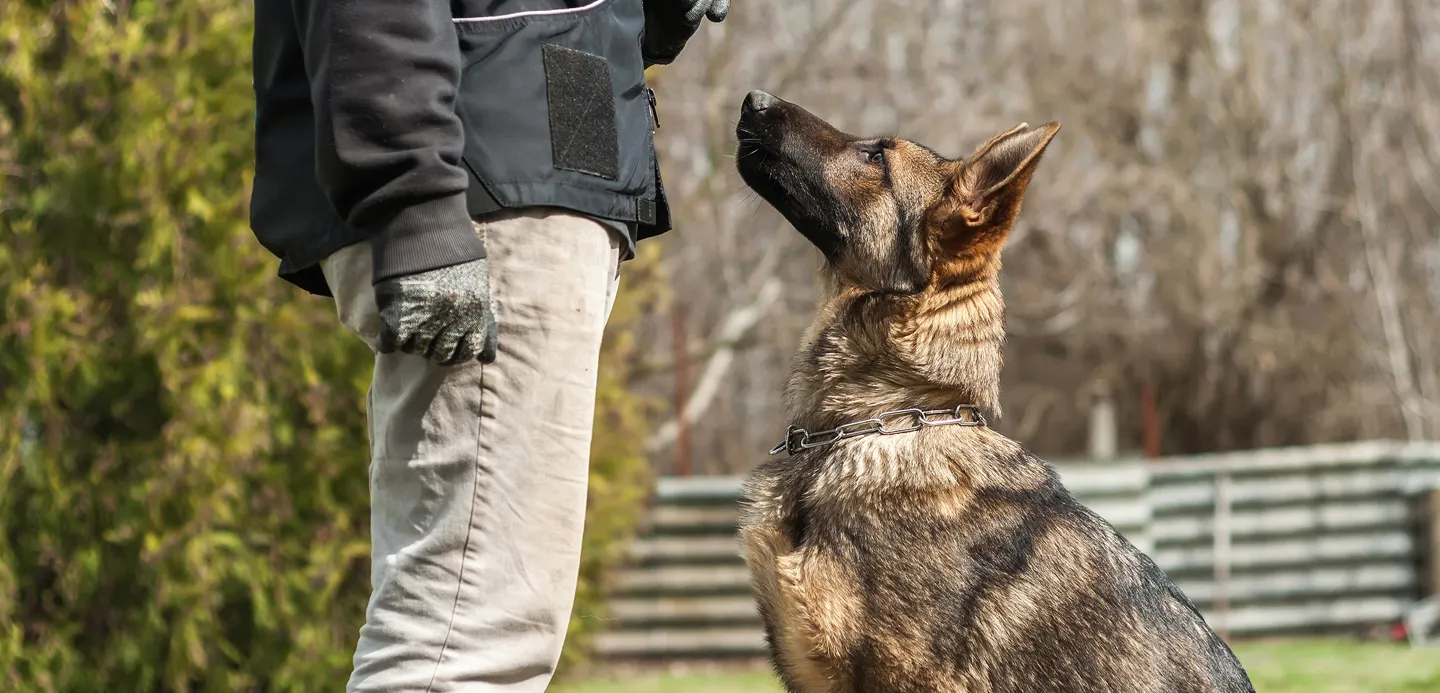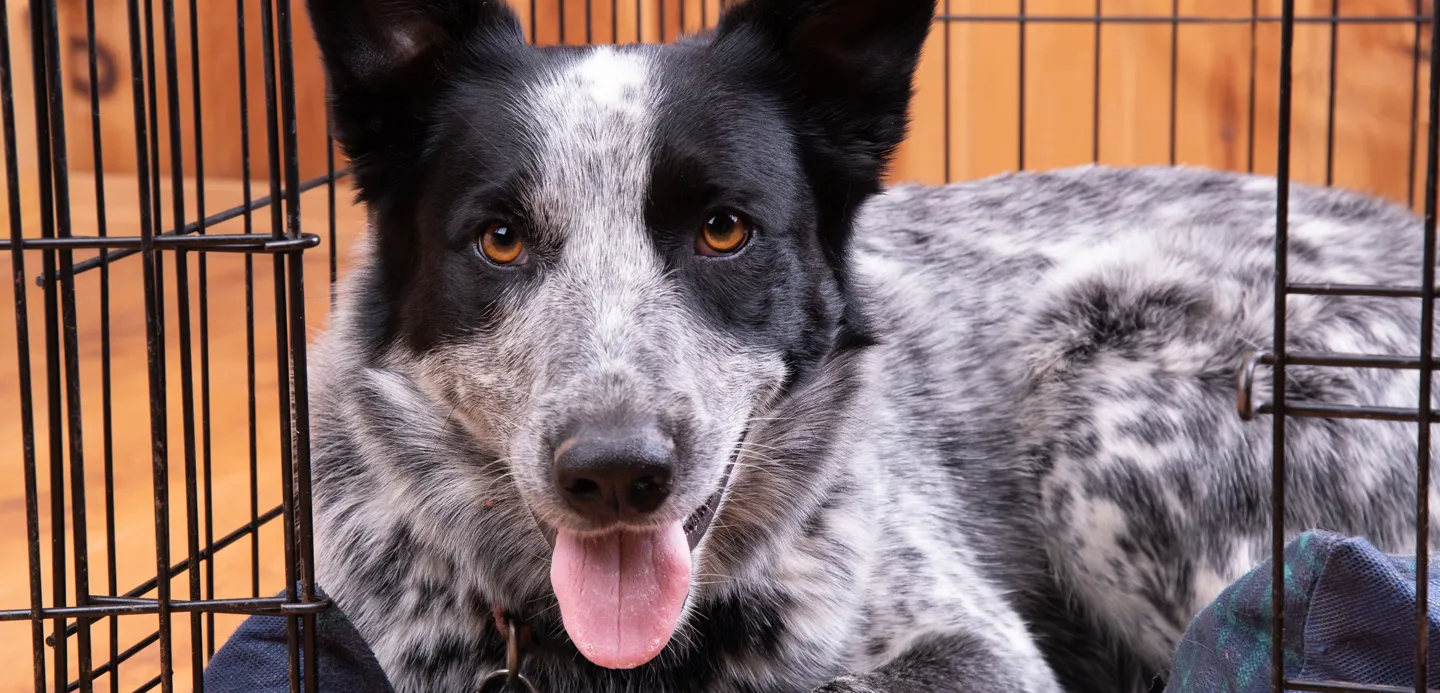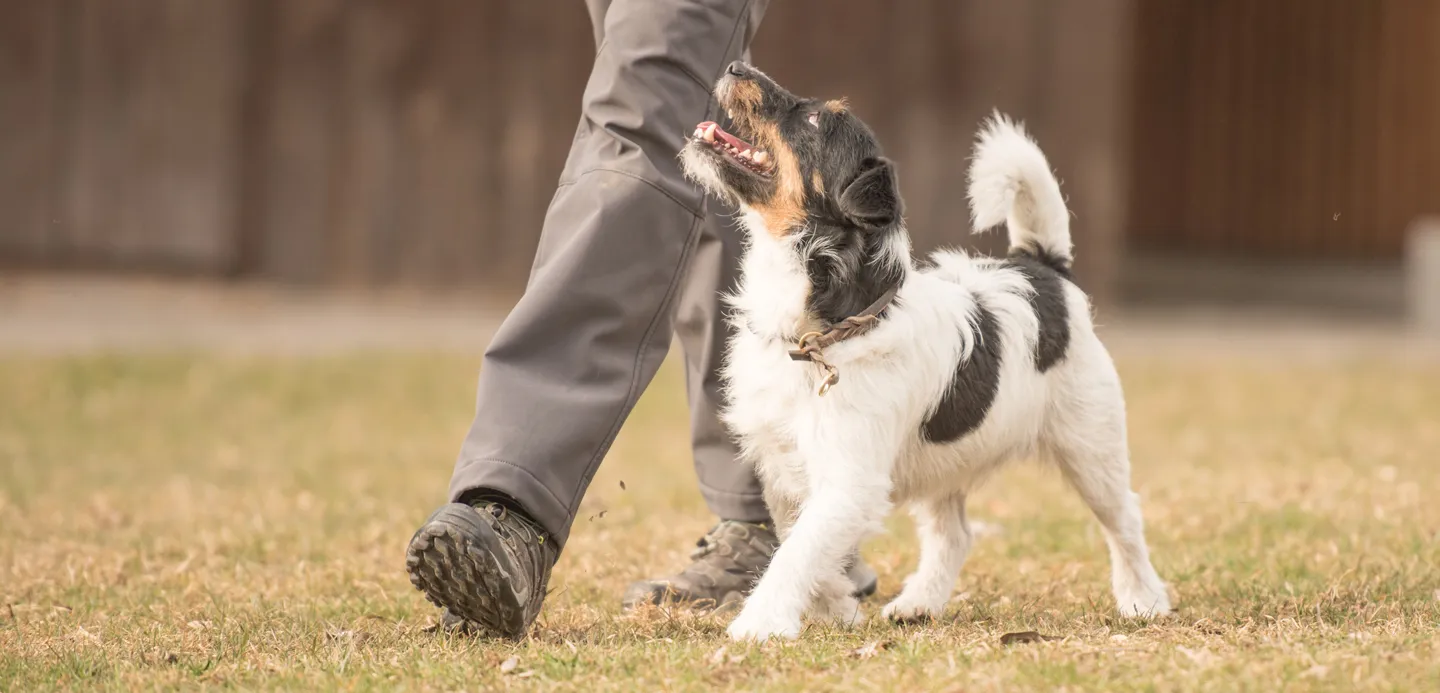It’s a common frustration for many dog owners: your beloved canine companion just won’t listen. Whether it’s ignoring commands, running off, or exhibiting unwanted behaviors, getting your dog to pay attention and obey can feel like an uphill battle. With 35 years of extensive experience training all types of dogs, I’ve identified four primary reasons why dogs often seem to tune us out: fear, confusion, distraction, and choice. A solid understanding of these factors is the first crucial step in learning How To Get Your Dog To Listen To You and foster a more harmonious relationship.
Understanding these core issues will not only make your life as a dog owner significantly easier but also lay the groundwork for effective training. By addressing the root cause of non-compliance, you can develop targeted strategies to encourage attentiveness and obedience, transforming your dog into a well-behaved and responsive companion. If you’re struggling with specific behaviors, learning how do you get your dog to stop jumping up can be an excellent starting point, as it often ties into a dog’s general listening skills.
Understanding Why Your Dog Isn’t Listening
1. Addressing Fear in Your Canine Companion
Fear is a powerful motivator, and it’s something you should never try to correct in your dog. Imagine walking your dog on the sidewalk when a loud car passes, startling them. Their natural instinct will be to run away, and at that moment, they won’t be listening to your commands. Instead of scolding your pet, your role is to reassure them. Gradually, they will learn that passing cars pose no threat as long as you are by their side. This patient approach builds trust and helps your dog overcome their anxieties.
Another common scenario involves dogs who are afraid to walk over a manhole or grate. Such dogs don’t respond to leash tugs because their fear is genuine, not because they are being stubborn. As a responsible dog owner, you need to step back and look at the bigger picture behind your animal’s seemingly odd behavior. Patience is key in these situations, and remember that consistent, gentle exposure helps overcome fear.
2. Overcoming Confusion with Consistent Commands
Confusion is another significant reason why your dog might not be listening. In this case, the need for correction lies with the pet owner, not the animal. Consistency is paramount when using commands to communicate with your pet, and this applies to everyone in the household. Ensure that all family members use the exact same command for a specific action (e.g., always “SIT” and never “SIT DOWN” or “SIT HERE”). Similarly, if the command is “COME,” avoid variations like “COME HERE.”
Over time, your dog will learn to recognize your tone of voice and demeanor, understanding exactly what you expect when a command is given. Dogs thrive on repetition and consistency, so it’s vital to avoid sending mixed messages. Once your dog has successfully mastered basic commands, you can even have a little fun. I enjoy an exercise called “CINEMA,” where I add a word or two to a usual command. Most of the time, the dog still recognizes the core command, a testament to their adaptability and your effective communication. This can also impress your friends, who might think you’re having a full conversation with your dog!
3. Managing Distractions for Better Focus
Distraction is often the culprit when your dog simply doesn’t want to do what you ask. There’s no shortage of things that can capture a dog’s attention: birds, cats, squirrels, cars, and, of course, other dogs! If you truly want to know how to get your dog to listen to you, ensure they are actually listening when you give a command. A simple yet highly effective method, especially for puppies, is to use their name before any command. This resets their attention and prepares them to respond appropriately. The act of hearing their name puts them in a more receptive frame of mind, as they learn that something is expected or a reward might follow.
Positive reinforcement, whether a friendly tone of voice or an occasional dog treat, is an excellent way to maintain a focused and obedient animal. Figuring out what truly motivates your pet will make the training process much more enjoyable for both of you. Equipping yourself with the right tools, such as the best leash for training a dog to walk, can also significantly aid in managing distractions during walks and public training sessions.
4. The Power of Choice: Asserting Your Leadership
Finally, and perhaps most importantly, your dog might not be listening to you because they are making a choice not to. This behavior absolutely must be corrected. Remember this fundamental principle: “Your dog must follow what you ask when asked.” Do not allow your animal the freedom of choice in matters of obedience; otherwise, you will be fighting an uphill battle for months, if not years. When a dog consistently chooses not to obey, it indicates a lack of clear leadership.
Some helpful tips to keep in mind include never losing sight of the fact that being the pack leader means you are in control. Your dog will only listen to you if you consistently demonstrate that you are in control. Getting your command to be obeyed is one of the most important aspects of establishing yourself as the leader in your dog’s eyes. Without this foundation, your dog may continue to disregard your commands.
Foundations of Obedience: Basic and Advanced Commands
Understanding and mastering basic commands like “Sit,” “Stay,” “Down,” and “Come” is foundational to any successful training program. These commands form the core of good behavior and are essential for your dog’s safety and your peace of mind. However, advancing to more complex commands can further solidify your leadership and control, which are essential aspects of methodologies like the Wolf Methodology. This might include commands such as “Heel” or “Fetch,” or even specific hand signals, all of which require a higher level of obedience and focus from your dog.
 A person's hand holding a dog's paw, demonstrating a basic command or bonding exercise with patience and gentle guidance
A person's hand holding a dog's paw, demonstrating a basic command or bonding exercise with patience and gentle guidance
Teaching advanced commands not only enhances your dog’s skill set but also strengthens the mental connection between you. It provides mental stimulation for your dog and reinforces the idea that you are the consistent source of guidance and direction. This consistent reinforcement of your role helps prevent issues like how to stop a dog pulling on his lead, which often stems from a dog attempting to lead the walk.
Establishing Yourself as the Pack Leader
Establishing yourself as the pack leader is crucial for a dog who listens. This doesn’t mean being dominant in a negative or aggressive way, but rather demonstrating leadership qualities that your dog will naturally respect and follow. Just as in a wolf pack, the alpha wolf is the leader not primarily because of brute strength, but due to intuition, calm assertiveness, and reliable decision-making. The other wolves trust the alpha to lead them and keep them safe.
 A dog sitting attentively next to its owner's leg, looking up, symbolizing trust and leadership in their bond
A dog sitting attentively next to its owner's leg, looking up, symbolizing trust and leadership in their bond
The same principle applies to your dog. They will accept you as the pack leader because they not only love you but also trust you to provide guidance, safety, and resources. Once you have established your leadership through consistent, non-violent methods, your dog will follow you and protect you forever. Consistent behavior from you, in turn, leads to consistent and reliable behavior from your dog. Your family is their pack, and they should understand their place within it, ensuring a harmonious existence for everyone involved.
The Role of High-Value Treats and Positive Reinforcement
Using high-value treats can be a game-changer in dog training. These are special treats that your dog doesn’t receive regularly and is exceptionally motivated to work for, making them perfect for reinforcing new behaviors. Positive reinforcement, especially when paired with the right kind of treat, can make the training process significantly smoother and more enjoyable for both you and your dog. It encourages them to repeat desired actions because they associate them with a positive outcome.
However, it’s important to note that treats alone are not enough for long-term success. The goal is for your dog to eventually perform the same commands even with an empty hand, responding to your voice and cues rather than just the promise of food. Treats are a powerful tool to initiate learning, but fading them out as your dog understands the command is crucial for genuine obedience.
Setting Clear Boundaries and Expectations
Setting clear boundaries is another crucial aspect of teaching your dog to listen. This involves establishing physical and behavioral limits for your dog, teaching them where they are allowed to go and what actions are permissible. This is particularly important in multi-pet households or when you have guests over, ensuring a calm and predictable environment. Clear boundaries reduce confusion and help your dog understand their role and expectations within the household.
Limiting your dog’s freedom, for example, by using a crate, is a perfect non-violent method to teach and correct unwanted behavior. The phrase “A crate is not a jail” quickly summarizes this technique. It’s a safe, personal space for your dog that can be used for short periods to manage behavior, promote calm, and aid in house training, ultimately fostering better listening habits.
Non-Violent Discipline: What to Do When Your Dog Won’t Listen
When I discuss correction, I am never referring to physical correction. For instance, if you ask your dog to stop barking and, after a few verbal commands, she refuses, a highly effective non-violent correction method is to simply guide her to her crate. Of course, she may continue barking in the crate, but at this point, just let her be. There’s no need to issue more commands; instead, let the crate do the work. After she calms down, you can quietly reopen the crate without saying anything.
 A brown dog sitting calmly inside a wire crate, demonstrating a non-violent training method for behavior correction
A brown dog sitting calmly inside a wire crate, demonstrating a non-violent training method for behavior correction
If you are consistent in using crate training for correction, you won’t have to resort to it very often because most dogs are quick learners and prefer to be with you. Limiting their freedom is a valid form of punishment, and it teaches them that freedom must be earned through good behavior. This approach reinforces that you are in control and that their actions have consequences. If your dog has a habit of how to stop a young dog from jumping up, crate time can also be an effective way to reset their behavior.
Teaching “No” and “Enough” Effectively
Along these same lines, the principle of action-reaction is a fundamental strategy in dog training. Any action your dog performs that elicits a positive reaction from you is likely to be repeated. Conversely, any action that results in a negative consequence, such as the removal of freedom, will eventually be avoided. Once you learn how to effectively tell your dog “no,” your animal will be much more open to you taking the lead—both figuratively and literally!
Furthermore, you want to keep the command “NO” as an absolute, non-negotiable directive. “NO” should be reserved for stopping your pet from jumping on the sofa, chewing on dangerous items, or doing anything that poses a danger to them or property. As a result, your dog will become very careful when they hear that word, knowing that the action is strictly forbidden. The “NO” command is for something you never want them to do.
Use “Enough” for things that are generally acceptable but that you want them to stop doing at that specific moment. A perfect example is barking: you can teach your dog when not to bark, but you cannot ask them to never do it, as barking is a natural part of a dog’s communication. Therefore, “Enough” will teach them that you simply don’t want them to continue this particular behavior now.
How do you know when your dog truly understands a command? The answer is when you can get your dog to perform the trick or command three times in a row, consistently. This signifies that they fully comprehend what is being asked of them. Getting your dog to listen to you takes considerable patience and repetition. Don’t lose hope if things aren’t improving as quickly as you might have hoped; like children, dogs learn at their own pace.
Once your dog understands a command, try not to repeat it excessively. People often assume their dog didn’t hear them, but if you used their name first, they most certainly did. Instead of repeating the command, use a word like “HEY.” You can keep saying “HEY” because it’s not a command. Your dog will perceive this as you becoming frustrated and will often respond to the command quicker. Positive reinforcement immediately after the command is performed correctly is just as important.
Remember that your dog lives to please you. Be the pack leader, earn their trust, and they will listen to you simply because they love you, not out of fear of physical correction. It will take a bit more time and effort to teach them to listen properly in all situations, but you will reap the lifelong rewards of a loyal and obedient friend!
Forming a Deeper Bond Through Nonviolent Communication
Wolf Methodology emphasizes nonviolent communication, which is also a cornerstone of my training program. This approach focuses on understanding your dog’s cues, body language, and natural instincts, and responding to them appropriately and humanely. By doing so, you can form a deeper, more meaningful, and respectful bond with your pet. This method moves beyond mere obedience training to foster a true partnership built on trust and mutual understanding.
 A person's hand gently stroking a dog's head, conveying affection and a strong, trusting bond built through understanding and kindness
A person's hand gently stroking a dog's head, conveying affection and a strong, trusting bond built through understanding and kindness
Nonviolent communication not only significantly improves behavior and responsiveness but also leads to a happier, more stress-free life for your dog. When your dog feels understood and respected, they are more likely to engage, learn, and listen willingly. This bond, based on trust rather than fear, is the ultimate goal for any dog owner and is particularly valuable if you’re working towards more advanced goals like how to train your dog to be a therapy dog, which requires exceptional responsiveness and emotional connection.
